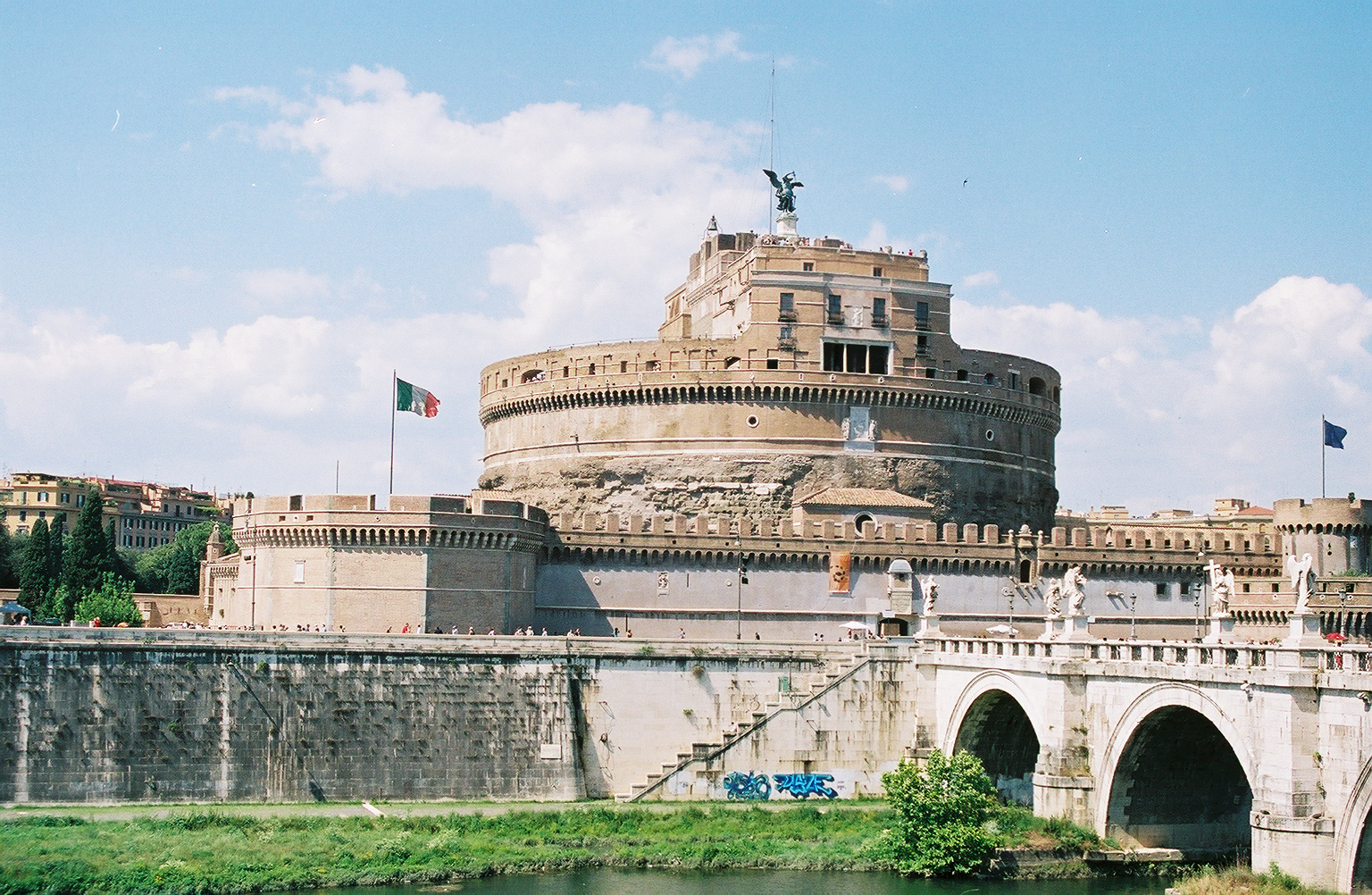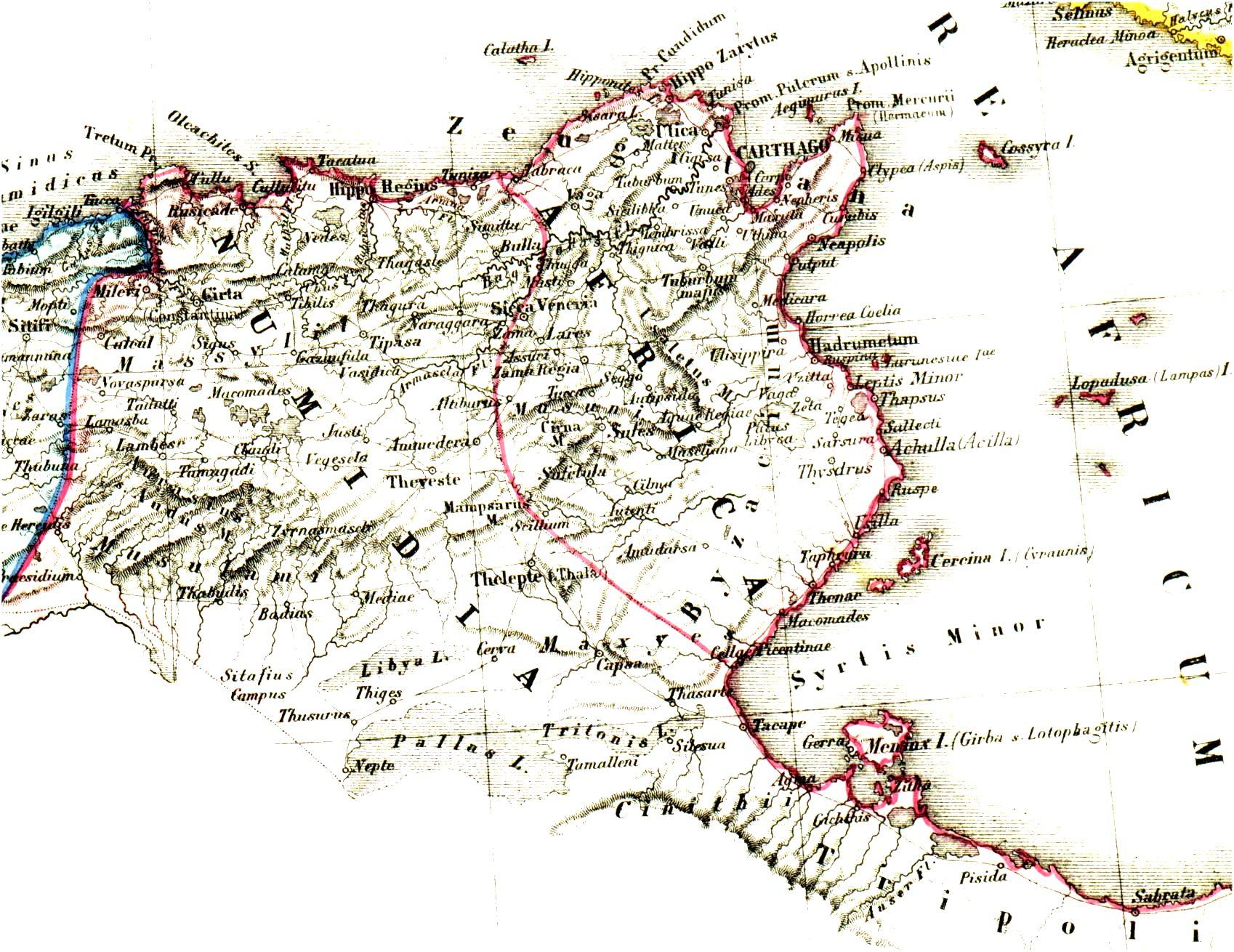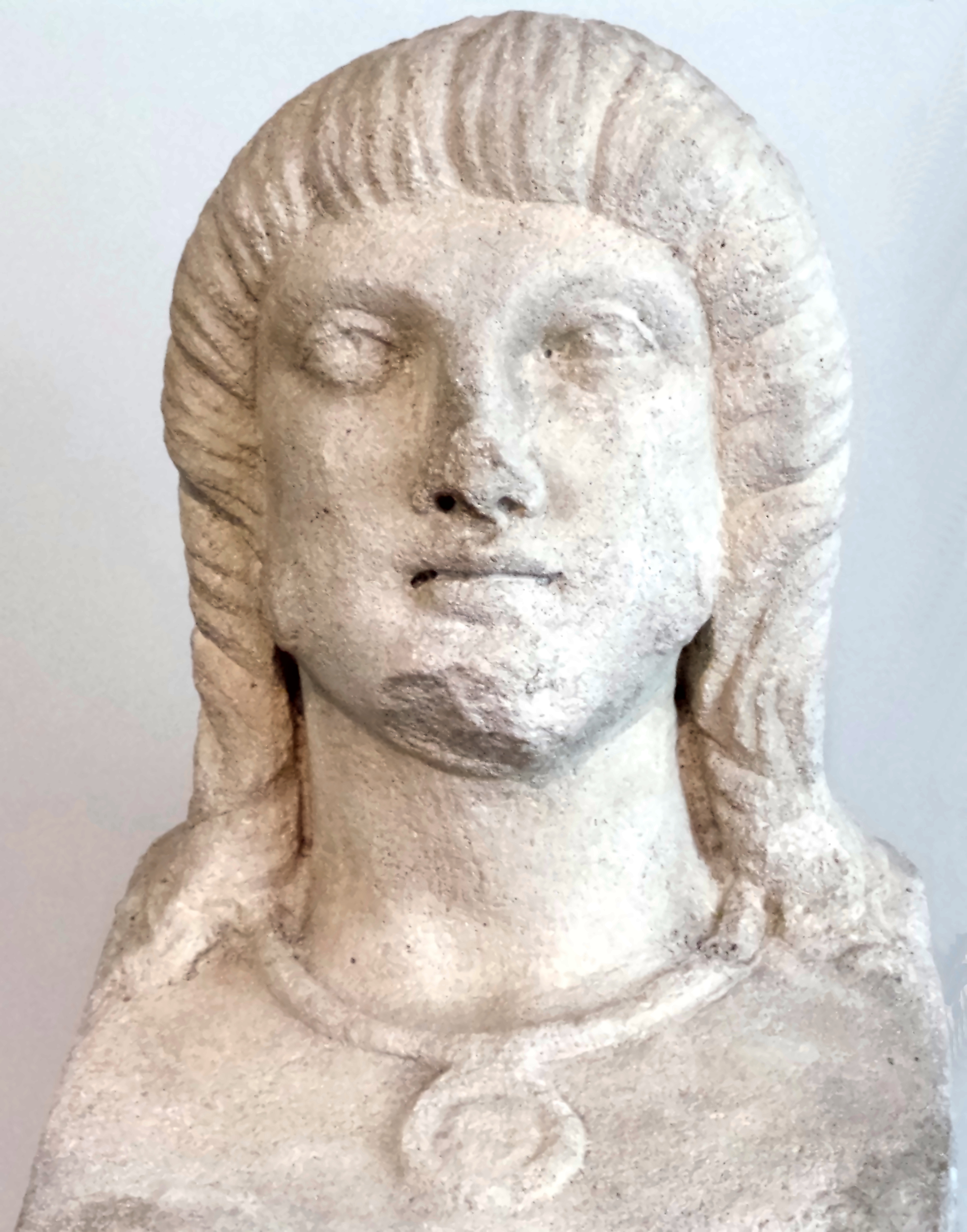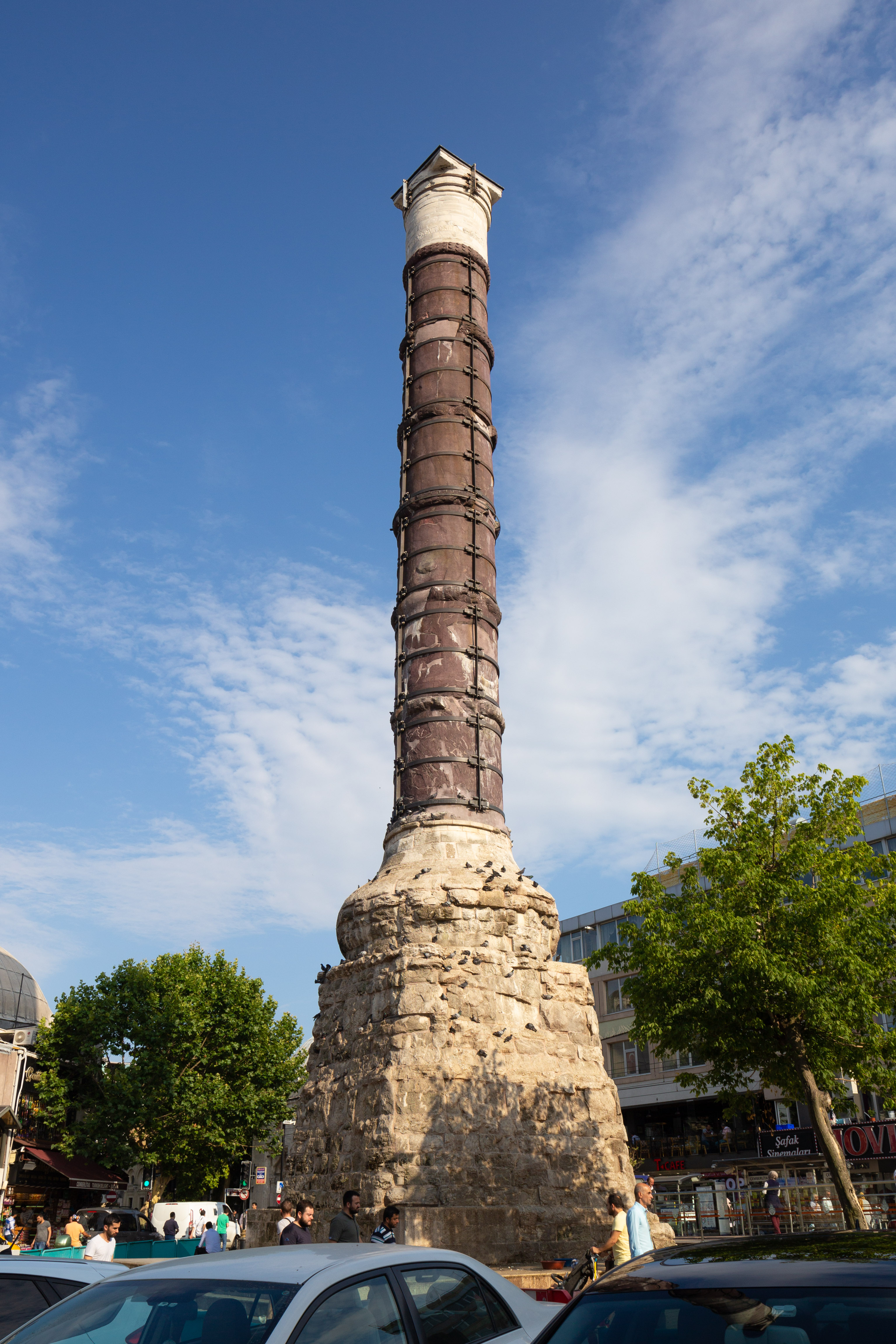|
Procopius
Procopius of Caesarea (; ''Prokópios ho Kaisareús''; ; – 565) was a prominent Late antiquity, late antique Byzantine Greeks, Greek scholar and historian from Caesarea Maritima. Accompanying the Roman general Belisarius in Justinian I, Emperor Justinian's wars, Procopius became the principal Roman historian of the 6th century, writing the ''History of the Wars'', the ''Buildings'', and the ''Secret History''. Early life Apart from his own writings, the main source for Procopius's life is an entry in the ''Suda'',Suda pi.2479. See under 'Procopius' oSuda On Line a Byzantine Greek encyclopaedia written sometime after 975 which discusses his early life. He was a native of Caesarea Maritima, Caesarea in the Roman province, province of ''Palaestina Prima''. He would have received a conventional upper-class education in the Greek literature, Greek classics and rhetoric, perhaps at the famous Rhetorical School of Gaza, school at Gaza. He may have attended law school, possibly at La ... [...More Info...] [...Related Items...] OR: [Wikipedia] [Google] [Baidu] |
Justinian I
Justinian I (, ; 48214 November 565), also known as Justinian the Great, was Roman emperor from 527 to 565. His reign was marked by the ambitious but only partly realized ''renovatio imperii'', or "restoration of the Empire". This ambition was expressed by the partial recovery of the territories of the defunct Western Roman Empire. His general, Belisarius, swiftly conquered the Vandal Kingdom in North Africa. Subsequently, Belisarius, Narses, and other generals Gothic War (535–554), conquered the Ostrogothic Kingdom, restoring Dalmatia, Sicily, Italian peninsula, Italy, and Rome to the empire after more than half a century of rule by the Ostrogoths. The Liberius (praetorian prefect), praetorian prefect Liberius reclaimed the south of the Iberian Peninsula, establishing the province of Spania. These campaigns re-established Roman control over the western Mediterranean, increasing the Empire's annual revenue by over a million ''solidi''. During his reign, Justinian also subdued ... [...More Info...] [...Related Items...] OR: [Wikipedia] [Google] [Baidu] |
Belisarius
BelisariusSometimes called Flavia gens#Later use, Flavius Belisarius. The name became a courtesy title by the late 4th century, see (; ; The exact date of his birth is unknown. March 565) was a military commander of the Byzantine Empire under Emperor Justinian I. Belisarius was instrumental in the reconquest of much of the Mediterranean territory belonging to the former Western Roman Empire, which had been lost less than a century prior. He is considered one of the greatest military commanders in history and in Byzantium. One of the defining features of Belisarius' career was his success despite varying levels of available resources. He is frequently cited as being among the "Last of the Romans". He conquered the Vandal Kingdom of North Africa in the Vandalic War in nine months and conquered much of Italy during the Gothic War (535–554), Gothic War. He also defeated the Vandal armies in the battle of Battle of Ad Decimum, Ad Decimum and played an important role at Battle of ... [...More Info...] [...Related Items...] OR: [Wikipedia] [Google] [Baidu] |
Gothic War (535–554)
The Gothic War between the Byzantine Empire during the reign of Roman emperor, Emperor Justinian I and the Ostrogothic Kingdom of Italy took place from 535 to 554 in the Italian peninsula, Dalmatia (theme), Dalmatia, Sardinia, Sicily, and Corsica. It was one of the last of the many Gothic wars against the Roman Empire. The war had its roots in the ambition of the Byzantine emperor Justinian I to recover the provinces of the former Western Roman Empire, which the Romans had lost to invading barbarian tribes in the previous century, during the Migration Period. The war followed the Roman reconquest of the diocese of Africa from the Vandals. Historians commonly divide the war into two phases. The first phase lasts from 535 to the fall of the Ostrogothic capital Ravenna in 540, and the apparent reconquest of Italy by the Byzantines. The second phase from 540/541 to 553 featured a Goths, Gothic revival under Totila, which was suppressed only after a long struggle by the Roman genera ... [...More Info...] [...Related Items...] OR: [Wikipedia] [Google] [Baidu] |
Siege Of Rome (537–538)
The first siege of Rome during the Gothic War (535–554), Gothic War lasted for a year and nine days, from 2 March 537 to 12 March 538. The city was besieged by the Ostrogoths, Ostrogothic army under their king Vitiges; the defending Eastern Roman Empire, East Romans were commanded by Belisarius, one of the most famous and successful Roman generals. The siege was the first major encounter between the forces of the two opponents, and played a decisive role in the subsequent development of the war. Background With Praetorian prefecture of Africa, northern Africa back in Roman hands after the successful Vandalic War, Emperor Justinian I turned his sights on Italy, with the old capital, the city of Rome. In the late 5th century, the peninsula had come under the control of the Ostrogoths, who, although they continued to acknowledge the Empire's suzerainty, had established a practically independent Ostrogothic Kingdom, kingdom. However, after the death of its founder, the able Th ... [...More Info...] [...Related Items...] OR: [Wikipedia] [Google] [Baidu] |
Nika Riots
The Nika riots (), Nika revolt or Nika sedition took place against Byzantine emperor Justinian I in Constantinople over the course of a week in 532 AD. They are often regarded as the most violent riots in the city's history, with nearly half of Constantinople being burned or destroyed and tens of thousands of people killed. Background The Roman Empire had well-developed associations, known as '' demes'', which supported the different factions (or teams) to which competitors in certain sporting events belonged, especially in chariot racing. There were initially four major factions in chariot racing, differentiated by the colour of the uniform in which they competed; the colours were also worn by their supporters. These were the Blues (''Veneti''), the Greens (''Prasini''), the Reds (''Russati''), and the Whites (''Albati''), although by the 6th century the only teams with any influence were the Blues and Greens. Emperor Justinian I was a supporter of the Blues, although his sup ... [...More Info...] [...Related Items...] OR: [Wikipedia] [Google] [Baidu] |
Battle Of Callinicum
The Battle of Callinicum took place on Easter Saturday, 19 April 531 AD, between an army of the Byzantine Empire under Belisarius and a Sasanian Empire, Sasanian cavalry force commanded by Azarethes. After being defeated at the Battle of Dara, the Sasanians moved to invade Roman Syria in an attempt to turn the tide of the war. Belisarius' rapid response foiled the plan, and his troops pushed the Persians to the Syrian border through maneuvering before forcing a battle in which the Sasanians won a Pyrrhic victory. Prelude In April 531 AD, the Persian king Kavadh I sent an army under Azarethes, consisting of a cavalry force numbering about 15,000 Aswaran with an additional 5,000 Lakhmid Arab cavalry under Al-Mundhir, to invade Syria, not through the heavily fortified frontier cities of Mesopotamia (Roman province), Roman Mesopotamia, but through the less conventional but also less-defended route in Commagene in order to capture Syrian cities such as Antioch. The Persian army cro ... [...More Info...] [...Related Items...] OR: [Wikipedia] [Google] [Baidu] |
Solomon (magister Militum)
Solomon () was an East Roman (Byzantine) general from northern Mesopotamia, who distinguished himself as a commander in the Vandalic War and the reconquest of North Africa in 533–534. He spent most of the next decade in Africa as its governor general, combining the military post of with the civil position of praetorian prefect. Solomon successfully confronted the large-scale rebellion of the native Berbers (), but was forced to flee following an army mutiny in spring of 536. His second tenure in Africa began in 539 and it was marked by victories over the Berbers, which led to the consolidation of the Byzantine position. A few years of prosperity followed, but were cut short by the rekindled Berber revolt and Solomon's defeat and death at the Battle of Cillium in 544. Biography Solomon was born, probably circa 480/490, in the fortress of Idriphthon in the district of Solachon, near Dara in the province of Mesopotamia. He was a eunuch as a result of an accident during his infancy ... [...More Info...] [...Related Items...] OR: [Wikipedia] [Google] [Baidu] |
Vandal Kingdom
The Vandal Kingdom () or Kingdom of the Vandals and Alans () was a confederation of Vandals and Alans, which was a barbarian kingdoms, barbarian kingdom established under Gaiseric, a Vandals, Vandalic warlord. It ruled parts of North Africa and the Mediterranean for 99 years from 435 to 534 AD. In 429 AD, the Vandals, estimated to number 80,000 people, had crossed by boat from Hispania to North Africa. They advanced eastward, conquering the coastal regions of what is now Tunisia, and Algeria. In 435, the Western Roman Empire, then ruling North Africa, allowed the Vandals to settle in the provinces of Numidia (Roman province), Numidia and Mauretania Caesariensis, Mauretania when it became clear that the Vandal army could not be defeated by Roman military forces. In 439, the Vandals renewed their advance eastward and captured Carthage, the most important city of North Africa. The fledgling kingdom then conquered the Roman-ruled islands of Mallorca, Sicily, Sardinia, and Corsica in th ... [...More Info...] [...Related Items...] OR: [Wikipedia] [Google] [Baidu] |
Ostrogothic Kingdom
The Ostrogothic Kingdom, officially the Kingdom of Italy (), was a barbarian kingdom established by the Germanic Ostrogoths that controlled Italian peninsula, Italy and neighbouring areas between 493 and 553. Led by Theodoric the Great, the Ostrogoths killed Odoacer, a Germanic soldier and erstwhile leader of the . Odoacer had previously become the ''de facto'' Kingdom of Odoacer, ruler of Italy following his deposition of Romulus Augustulus, the final emperor of the Western Roman Empire, in 476. Under Theodoric, the Ostrogothic kingdom reached its zenith, stretching from Southern France in the west to Geography of Serbia, Western Serbia in the southeast. Most of the Roman society, social institutions of the Fall of the Western Roman Empire, late Western Roman Empire were preserved during his rule. Theodoric called himself "King of the Goths and Succession of the Roman Empire, Romans" (), demonstrating his desire to be a leader for both peoples. Under Justinian I, the Byzantine ... [...More Info...] [...Related Items...] OR: [Wikipedia] [Google] [Baidu] |
Late Antiquity
Late antiquity marks the period that comes after the end of classical antiquity and stretches into the onset of the Early Middle Ages. Late antiquity as a period was popularized by Peter Brown (historian), Peter Brown in 1971, and this periodization has since been widely accepted. Late antiquity represents a cultural sphere that covered much of the Mediterranean world, including parts of Europe and the Near East.Brown, Peter (1971), ''The World of Late Antiquity (1971), The World of Late Antiquity, AD 150-750''Introduction Late antiquity was an era of massive political and religious transformation. It marked the origins or ascendance of the three major monotheistic religions: Christianity, rabbinic Judaism, and Islam. It also marked the ends of both the Western Roman Empire and the Sasanian Empire, the last Persian empire of antiquity, and the beginning of the early Muslim conquests, Arab conquests. Meanwhile, the Byzantine Empire, Byzantine (Eastern Roman) Empire became a milit ... [...More Info...] [...Related Items...] OR: [Wikipedia] [Google] [Baidu] |
Constantinople
Constantinople (#Names of Constantinople, see other names) was a historical city located on the Bosporus that served as the capital of the Roman Empire, Roman, Byzantine Empire, Byzantine, Latin Empire, Latin, and Ottoman Empire, Ottoman empires between its consecration in 330 until 1930, when it was renamed to Istanbul. Initially as New Rome, Constantinople was founded in 324 during the reign of Constantine the Great on the site of the existing settlement of Byzantium, and shortly thereafter in 330 became the capital of the Roman Empire. Following the collapse of the Western Roman Empire in the late 5th century, Constantinople remained the capital of the Eastern Roman Empire (also known as the Byzantine Empire; 330–1204 and 1261–1453), the Latin Empire (1204–1261), and the Ottoman Empire (1453–1922). Following the Turkish War of Independence, the Turkish capital then moved to Ankara. Although the city had been known as Istanbul since 1453, it was officially renamed as Is ... [...More Info...] [...Related Items...] OR: [Wikipedia] [Google] [Baidu] |
Extreme Weather Events Of 535–536
The volcanic winter of 536 was among the most severe and protracted episodes of climatic cooling in the Northern Hemisphere in the last 2,000 years. The volcanic winter was caused by at least three simultaneous eruptions of uncertain origin, with several possible locations proposed in various continents. Modern scholarship has determined that in early AD 536 (or possibly late 535), an eruption ejected massive amounts of sulfate aerosols into the atmosphere, which reduced the solar radiation reaching the Earth's surface and cooled the atmosphere for several years. In March 536, Constantinople began experiencing darkened skies and lower temperatures. Summer temperatures in 536 fell by as much as below normal in Europe. The lingering effect of the volcanic winter of 536 was augmented in 539–540, when another volcanic eruption caused summer temperatures to decline as much as below normal in Europe. There is evidence of still another volcanic eruption in 547 which would have exten ... [...More Info...] [...Related Items...] OR: [Wikipedia] [Google] [Baidu] |







